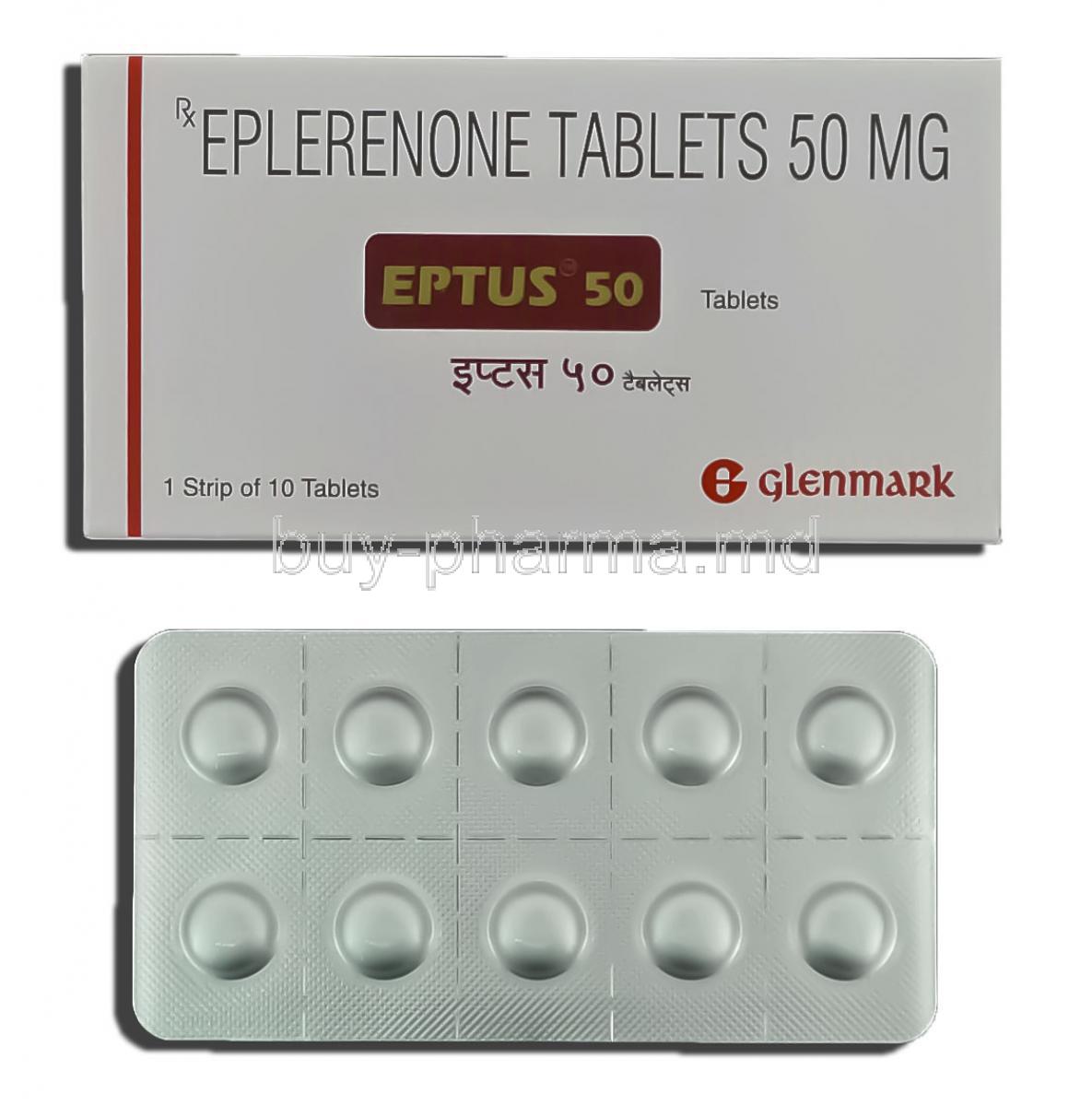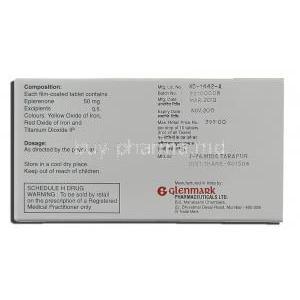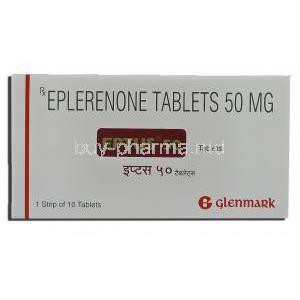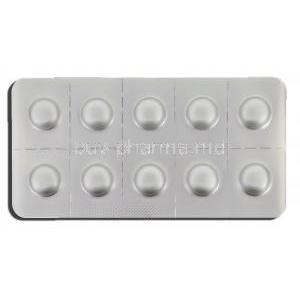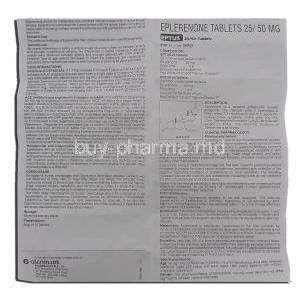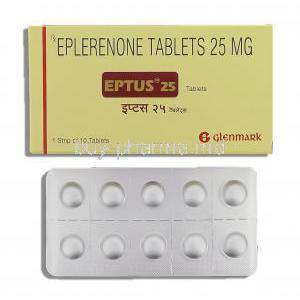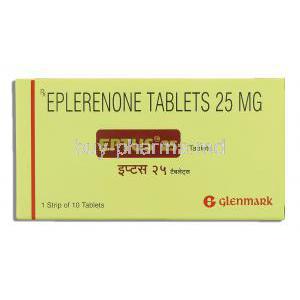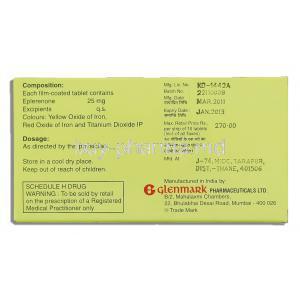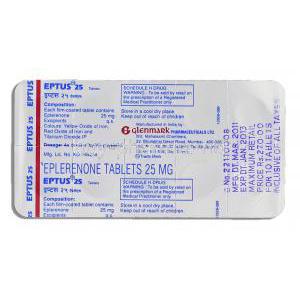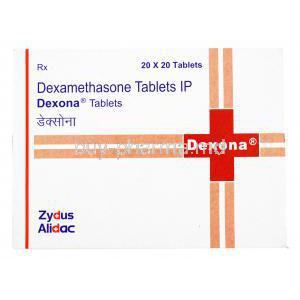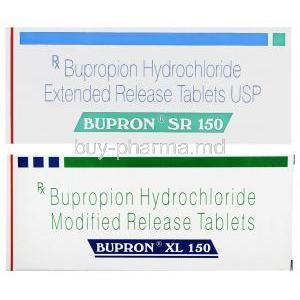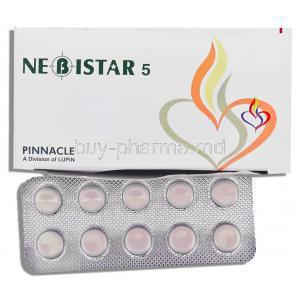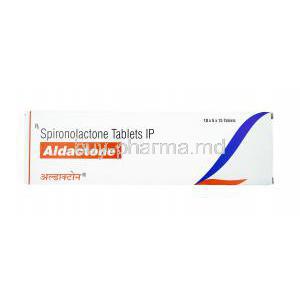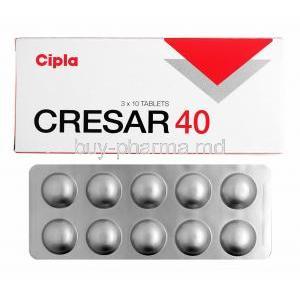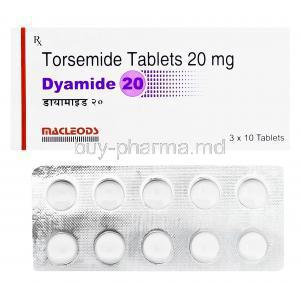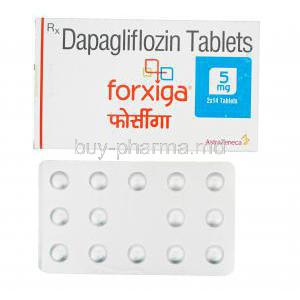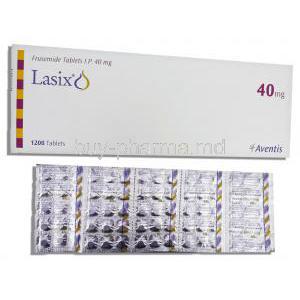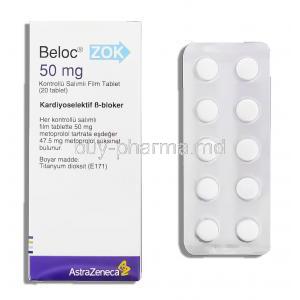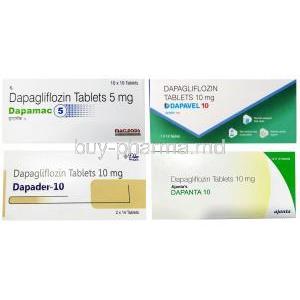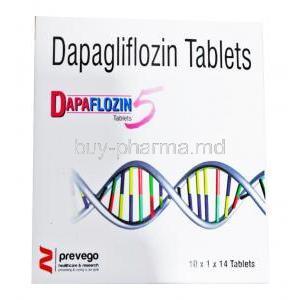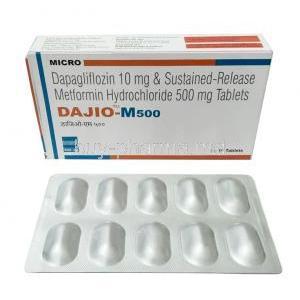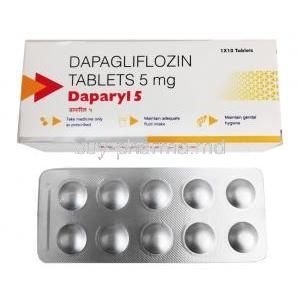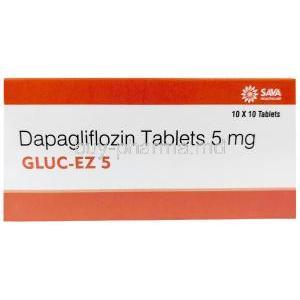Introduction to Eptus (Eplerenone)
Overview of Eptus as a Selective Aldosterone Blocker
Eptus, containing the active agent eplerenone, is a highly selective aldosterone receptor antagonist. By blocking the deleterious effects of aldosterone, it reduces sodium retention, fluid overload, and vascular remodeling. This pharmacological precision helps improve outcomes in patients with both cardiovascular and renal pathologies.
Role in Cardiovascular Medicine and Nephrology
Eplerenone plays a pivotal role in modern cardiology. It is employed to control systemic hypertension, mitigate heart failure progression, and enhance survival in individuals who have experienced myocardial infarction. In nephrology, its aldosterone-blocking effects protect renal tissues, particularly in patients at risk of diabetic or hypertensive nephropathy.
Comparison with Other Mineralocorticoid Receptor Antagonists
Unlike spironolactone, another drug in the same class, eplerenone demonstrates greater receptor selectivity and fewer endocrine-related side effects. Patients benefit from reduced risks of gynecomastia and menstrual irregularities, which are common drawbacks of older agents.
Composition and Formulation
Active Ingredient: Eplerenone
The therapeutic essence of Eptus is eplerenone, a potent molecule with targeted mineralocorticoid receptor activity.
Available Dosage Forms and Strengths
Eptus is typically offered in film-coated tablet formulations, with common strengths including 25 mg and 50 mg. These strengths provide flexibility for dose adjustments tailored to clinical needs.
Excipients and Inactive Ingredients
Inactive components may include lactose monohydrate, microcrystalline cellulose, and hypromellose, designed to ensure stability, uniform absorption, and patient tolerability.
Mechanism of Action: How Eplerenone Works
Selective Antagonism of Aldosterone at Mineralocorticoid Receptors
Eplerenone selectively binds to mineralocorticoid receptors, preventing aldosterone from exerting its hypertensive and pro-fibrotic effects.
Reduction of Sodium Reabsorption and Water Retention
By attenuating sodium reabsorption within the distal renal tubules, eplerenone curtails water retention and diminishes intravascular volume, leading to lower blood pressure and reduced cardiac strain.
Impact on Potassium Conservation
This mechanism also conserves potassium, an essential electrolyte for cardiac rhythm. However, elevated potassium levels must be carefully monitored to prevent hyperkalemia.
Cardioprotective and Renoprotective Effects
Eplerenone mitigates cardiac remodeling, slows progression of ventricular hypertrophy, and shields renal glomeruli from aldosterone-induced damage, ultimately enhancing long-term patient outcomes.
Approved Medical Uses of Eptus
Treatment of Hypertension (High Blood Pressure)
Eptus is prescribed as an antihypertensive agent for patients requiring additional control beyond conventional medications.
Management of Chronic Heart Failure Post-Myocardial Infarction
In patients with compromised cardiac function after a heart attack, eplerenone reduces hospitalization risk and improves survival rates.
Reduction of Cardiovascular Mortality in Left Ventricular Dysfunction
Clinical studies have confirmed its ability to lower cardiovascular mortality, particularly in patients with reduced ejection fraction.
Use in Resistant Hypertension
When other medications fail to achieve adequate control, Eptus can be combined with ACE inhibitors, ARBs, or calcium channel blockers to enhance blood pressure regulation.
Off-Label and Emerging Uses of Eplerenone
Use in Diabetic Nephropathy and Chronic Kidney Disease
Research suggests benefits in reducing proteinuria and slowing renal decline in diabetic patients.
Potential Role in Polycystic Ovary Syndrome (PCOS)
Its hormonal modulation properties may assist in managing hyperandrogenism-related manifestations.
Management of Primary Aldosteronism
Though not the first-line option, eplerenone is sometimes used as an alternative therapy for patients with aldosterone-producing adenomas or bilateral adrenal hyperplasia.
Adjunctive Therapy in Resistant Edema and Liver Cirrhosis-Related Ascites
Eptus can aid in alleviating fluid retention unresponsive to standard diuretics, particularly in cirrhotic patients.
Dosage and Administration Guidelines
Standard Adult Dosing for Hypertension
Initial therapy often begins at 50 mg once daily, with adjustments depending on blood pressure response.
Recommended Dosing for Heart Failure Management
Starting dose: 25 mg once daily. Dose may be titrated to 50 mg daily after four weeks, based on serum potassium levels and renal function.
Dose Titration and Monitoring Requirements
Regular monitoring of serum electrolytes and kidney function is essential during dose escalation.
Adjustment of Dosage in Renal Impairment
- Moderate impairment: lower initial dose and slower titration.
- Severe impairment or dialysis: contraindicated.
Adjustment of Dosage in Hepatic Impairment
Patients with mild to moderate hepatic impairment may require cautious initiation and closer monitoring.
Administration Instructions
Eptus tablets can be taken with or without food. Consistency in timing is recommended to maintain stable drug plasma concentrations.
Side Effects of Eplerenone
Overview of Safety Profile
Eplerenone is generally well tolerated, though adverse reactions may arise in susceptible populations.
Common Side Effects
- Hyperkalemia (elevated potassium levels)
- Dizziness or lightheadedness
- Fatigue and general weakness
- Increased serum creatinine
Less Common but Serious Side Effects
- Cardiac arrhythmias due to electrolyte imbalance
- Severe hypotension, especially in combination therapy
- Progressive kidney function decline
- Hypersensitivity and allergic reactions
Warnings and Important Precautions
Risk of Life-Threatening Hyperkalemia
Eplerenone therapy carries a significant risk of hyperkalemia, which can precipitate fatal cardiac arrhythmias if left unrecognized. Patients with impaired renal function, diabetes, or those receiving concurrent potassium-sparing agents are particularly vulnerable. Vigilance in monitoring serum potassium is indispensable.
Importance of Regular Electrolyte and Renal Function Monitoring
Periodic evaluation of serum electrolytes and renal function is mandatory. Regular blood tests help clinicians detect subtle rises in potassium or creatinine before complications emerge. Monitoring should be intensified when dose adjustments are made or when additional medications affecting renal dynamics are introduced.
Blood Pressure Monitoring Requirements
Eplerenone lowers blood pressure through aldosterone antagonism. Hypotension may occur, especially in patients concurrently taking other antihypertensives. Consistent blood pressure tracking, both in clinical settings and at home, ensures optimal therapeutic outcomes while minimizing adverse events.
Long-Term Therapy Considerations
Prolonged use of eplerenone requires adherence to strict safety protocols:
- Regular assessment of renal function and serum potassium.
- Re-evaluation of concomitant medications that influence electrolytes.
- Adjustment of lifestyle factors such as dietary potassium intake.
Contraindications of Eptus (Eplerenone)
Known Hypersensitivity to Eplerenone or Excipients
Individuals with hypersensitivity reactions to eplerenone or tablet excipients must not use this medication, as it may provoke severe allergic responses.
Severe Renal Impairment or Patients on Dialysis
Eplerenone is contraindicated in advanced renal impairment or in patients undergoing dialysis. These populations face amplified risks of uncontrolled hyperkalemia and drug accumulation.
Concomitant Use with Strong CYP3A4 Inhibitors
Medications such as ketoconazole, itraconazole, clarithromycin, and certain antivirals significantly elevate eplerenone plasma concentrations. Such combinations are contraindicated due to the heightened risk of toxicity.
Type 2 Diabetes Mellitus with Microalbuminuria
In hypertensive patients with type 2 diabetes and microalbuminuria, eplerenone should not be prescribed, as the likelihood of adverse renal outcomes is markedly increased.
Drug Interactions with Eplerenone
Interactions with Potassium-Sparing Diuretics and Potassium Supplements
Concurrent administration of eplerenone with other potassium-sparing agents (e.g., amiloride, triamterene) or supplements substantially increases the risk of hyperkalemia.
CYP3A4 Inhibitors and Inducers
Potent inhibitors of CYP3A4 elevate drug concentrations, while inducers such as rifampicin, phenytoin, or carbamazepine may reduce efficacy by accelerating metabolism. Both scenarios compromise therapeutic safety and effectiveness.
Interactions with ACE Inhibitors and ARBs
While often co-prescribed in heart failure, combining these agents increases the incidence of hyperkalemia and necessitates stringent laboratory surveillance.
NSAIDs and Risk of Renal Impairment
Non-steroidal anti-inflammatory drugs may attenuate the antihypertensive effect of eplerenone and further strain renal function, particularly in dehydrated or elderly patients.
Lithium Interaction Risks
Eplerenone may increase lithium concentrations, leading to lithium toxicity. Concomitant use requires extreme caution, with monitoring of serum lithium levels when unavoidable.
Careful Administration Considerations
Patients with Impaired Kidney Function
Lower starting doses and slower titration are recommended. Monitoring should be rigorous to preempt renal decompensation or hyperkalemia.
Patients with Hepatic Disease
In hepatic impairment, altered metabolism may necessitate dose adjustments. Close clinical supervision helps mitigate systemic accumulation.
Polypharmacy and Elderly Patients
Elderly individuals often present with multiple comorbidities and polypharmacy, heightening the risk of adverse drug interactions. Careful medication reconciliation is essential.
Debilitated or Malnourished Individuals
In vulnerable patients, electrolyte shifts may occur more dramatically, requiring conservative dosing strategies and enhanced follow-up.
Administration in Special Populations
Elderly Patients
Older adults face an elevated risk of hyperkalemia and renal dysfunction due to age-related physiological decline. Frequent monitoring is critical in this demographic.
Pregnant Women
Data on eplerenone use during pregnancy remain limited. Given the potential risks to fetal development, alternative therapies are generally preferred unless absolutely necessary.
Nursing Mothers
Eplerenone may pass into breast milk. The potential for infant exposure requires weighing maternal benefit against neonatal risk, often leading to a decision to avoid breastfeeding during therapy.
Children and Adolescents
Safety and efficacy have not been conclusively established in pediatric populations. Use is restricted to exceptional cases under specialized medical supervision.
Overdose and Emergency Management
Symptoms of Overdose
Excessive ingestion may lead to severe hyperkalemia, marked hypotension, and dangerous cardiac arrhythmias, demanding immediate medical intervention.
Recommended Immediate Interventions
Initial management includes discontinuation of the drug, gastrointestinal decontamination if appropriate, and urgent stabilization of electrolyte disturbances.
Supportive Measures and Monitoring Requirements
Continuous cardiac monitoring, intravenous fluids, potassium-lowering therapies, and renal support measures form the cornerstone of overdose management.
Storage and Handling Precautions
Recommended Storage Temperature and Conditions
Tablets should be stored at controlled room temperature, typically between 20°C and 25°C, away from excessive heat.
Protecting Tablets from Moisture and Light
Blister packs and containers should remain sealed until use to prevent degradation from humidity or direct sunlight.
Safe Handling and Disposal Guidelines
Unused or expired medication must be disposed of according to local pharmaceutical waste regulations, preventing accidental ingestion or environmental contamination.
Patient Advice on Medication Storage at Home
Patients should keep Eptus in its original container, out of reach of children and pets, and avoid storing it in damp environments such as bathrooms or kitchens.

